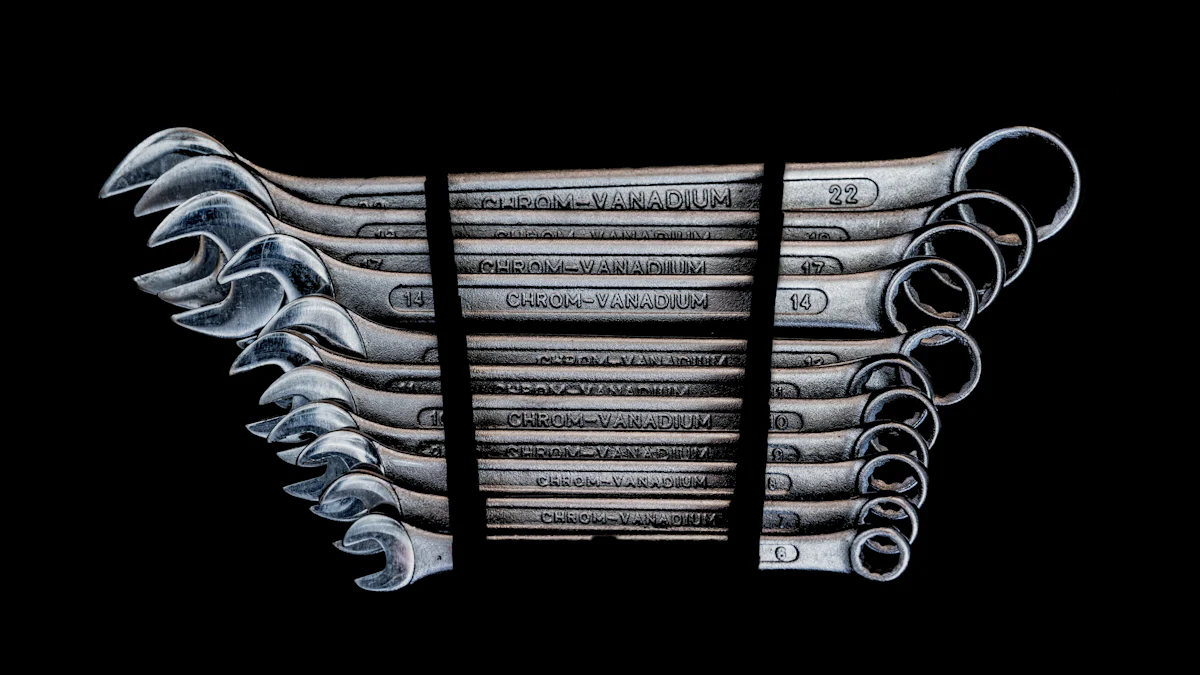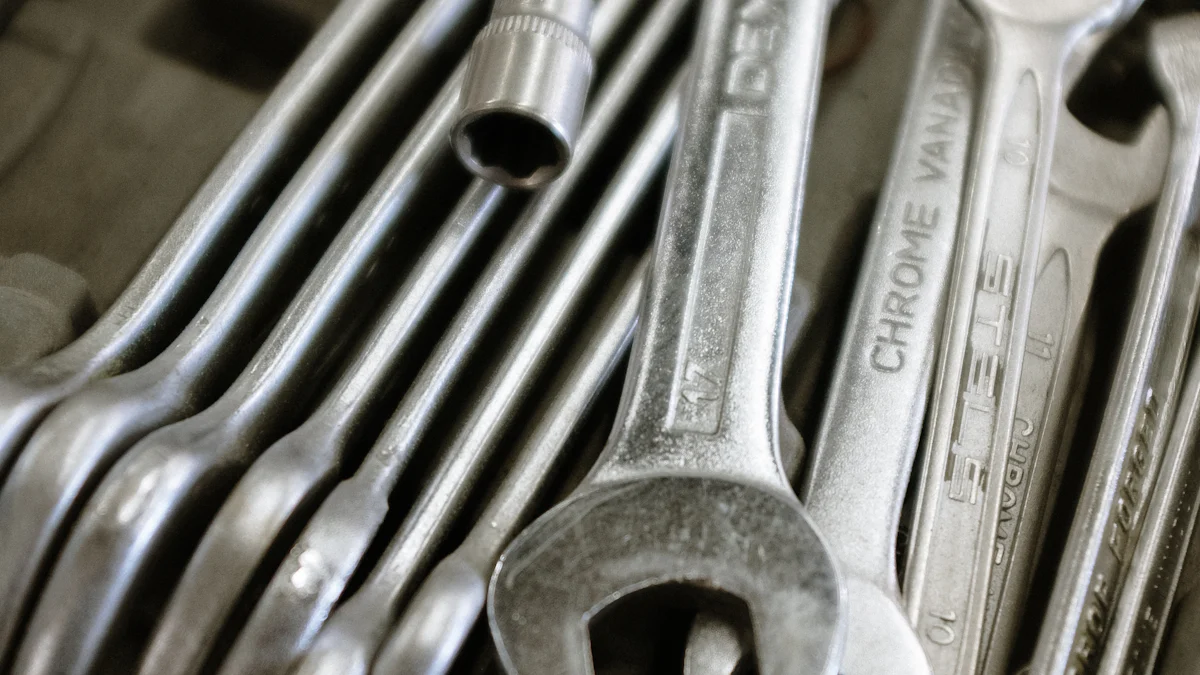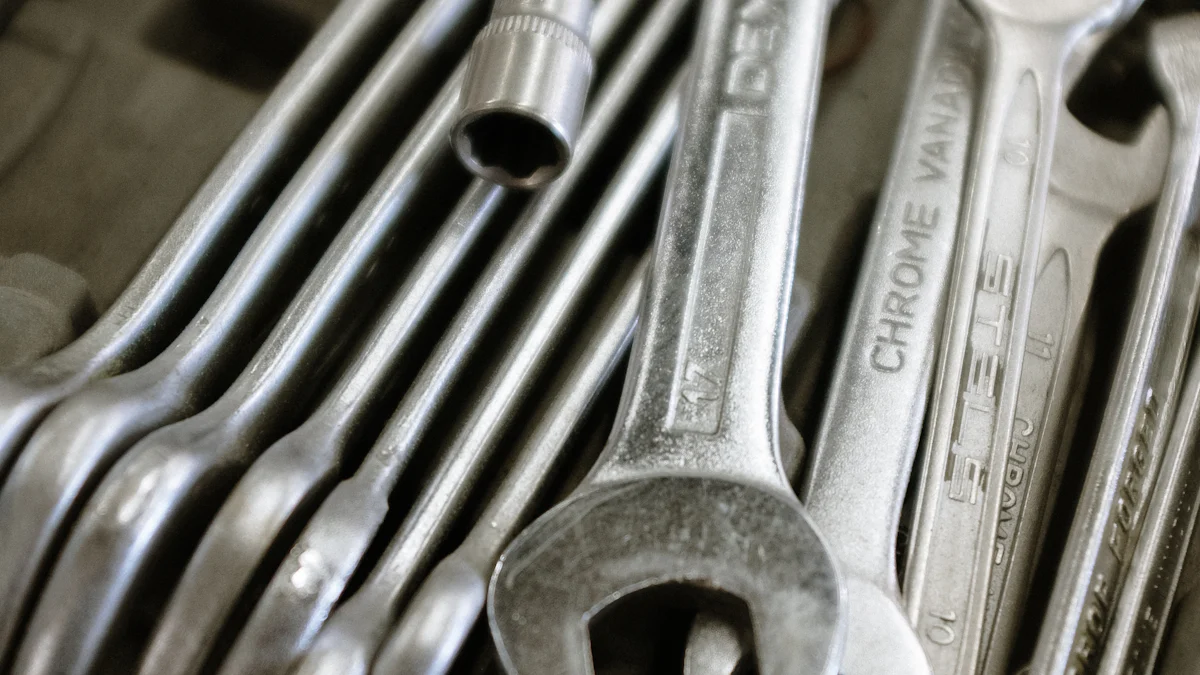
Offset wrenches play a crucial role in various industries, including automotive and construction. These tools excel in accessing tight spaces where straight wrenches fall short. Using the right tools ensures efficiency and safety in any task. This blog aims to provide effective tips for using an offset wrench, enhancing both performance and safety.
Understanding Offset Wrenches

What is an Offset Wrench?
Definition and design
An offset wrench features a unique design that sets it apart from standard wrenches. The head of the wrench is angled, usually at 15 degrees, which allows for better access in tight spaces. This design makes the tool ideal for tasks where a straight wrench would be ineffective.
Common types and sizes
Offset wrenches come in various types and sizes to suit different applications:
- Adjustable Offset Wrenches: These wrenches have adjustable jaws, enabling them to grip various sizes of nuts and bolts.
- Fixed Offset Wrenches: These wrenches have a set jaw size, providing stability and durability for specific tasks.
- Ratcheting Offset Wrenches: These wrenches feature a ratcheting mechanism, allowing for quick and efficient tightening or loosening of fasteners in confined spaces.
Benefits of Using Offset Wrenches
Enhanced leverage
The angled design of an offset wrench provides enhanced leverage. This design allows users to apply more force with less effort. This feature proves particularly useful when dealing with stubborn nuts or bolts.
Access to tight spaces
Offset wrenches excel in accessing tight spaces. The angled head allows the tool to reach areas that standard wrenches cannot. This makes the tool indispensable for automotive repair, plumbing, and other tasks requiring precision in confined areas.
Versatility in various applications
Offset wrenches offer versatility across a wide range of applications. Mechanics often use these tools for assembling or disassembling engines and working on vehicles. Plumbers and HVAC technicians rely on offset pipe wrenches for gripping and turning pipes. Home improvement projects, such as electrical work, also benefit from the tool’s ability to access hard-to-reach places.
Choosing the Right Offset Wrench
Factors to Consider
Material and build quality
Selecting an offset wrench with high-quality material ensures durability and reliability. Steel alloys, such as chrome vanadium, offer excellent strength and resistance to corrosion. A sturdy build prevents the wrench from bending or breaking under pressure. Quality materials contribute to the tool’s longevity and performance.
Size and fit for specific tasks
Choosing the correct size of an offset wrench is crucial for effective use. The wrench must fit snugly around the fastener to provide a secure grip. An ill-fitting wrench can slip, causing damage to the fastener or injury to the user. Measure the nut or bolt accurately before selecting the wrench size.
Brand reputation and reviews
Trustworthy brands often produce reliable tools. Reading reviews helps in understanding the performance and durability of different offset wrenches. For example, the Williams 1907 Open End Offset Wrench receives praise for its long handle and excellent leverage. Users appreciate its ability to clear obstructions during industrial tasks. Similarly, the DH50118 diehard offset wrench set is recommended for its high quality and reliability, making it a valuable addition to any tool collection.
Recommended Brands and Models
Top-rated offset wrenches
Several brands stand out for their top-rated offset wrenches:
- Williams 1907 Open End Offset Wrench: Known for its long handle and superior leverage.
- Craftsman Deep-Offset Wrenches: Praised for their precision and fit in tight spots, especially the USA-made versions.
- GearWrench 16-Piece Offset Box Wrench Set: Offers a comprehensive range of sizes with a durable build.
“The Williams 1907 Open End Offset Wrench has been my trusty companion during challenging industrial tasks. Its long offset handle provides clearance of obstructions and greater leverage, making it a versatile tool in my workshop.” – Williams 1907 Open End Offset Wrench user
Budget-friendly options
For those seeking budget-friendly options without compromising on quality:
- Tekton Offset Box End Wrench Set: Provides good value with a range of sizes and reliable performance.
- DieHard DH50118 Offset Wrench Set: Offers high quality at an affordable price, making it suitable for both professionals and enthusiasts.
- Neiko 03574A Offset Box Wrench Set: Known for its affordability and decent build quality.
“Having used the DH50118 diehard offset wrench set, I can confidently say that it is an indispensable addition to any mechanic’s or enthusiast’s tool collection. Trust in DieHard’s commitment to high-quality, reliable tools, and expand your capabilities from your garage or driveway.” – DH50118 diehard offset wrench set user
Proper Techniques for Using Offset Wrenches

Safety Precautions
Wearing protective gear
Safety remains paramount when using an offset wrench. Protective gear, such as gloves and safety glasses, shields the user from potential injuries. Gloves provide a better grip on the tool, reducing the risk of slipping. Safety glasses protect the eyes from debris or accidental contact with the wrench.
Inspecting the wrench before use
Before starting any task, inspect the offset wrench for signs of wear or damage. Check for cracks, bends, or worn-out areas on the wrench. A damaged tool can fail during use, posing a risk to the user. Ensure that the wrench’s moving parts, if any, function smoothly. Regular inspection maintains the tool’s reliability and safety.
Step-by-Step Usage Guide
Positioning the wrench correctly
Proper positioning of the offset wrench ensures effective use. Align the wrench’s jaws with the fastener, ensuring a snug fit. The angled head should provide clear access to the fastener without obstruction. Correct positioning minimizes the risk of slippage and enhances the tool’s efficiency.
Applying the right amount of force
Applying the correct amount of force is crucial when using an offset wrench. Start by gripping the handle firmly. Apply steady pressure, avoiding sudden or jerky movements. Excessive force can damage the fastener or the wrench. Controlled force ensures smooth operation and prevents accidents.
Avoiding common mistakes
Avoiding common mistakes enhances the effectiveness of an offset wrench. Do not use the wrench on fasteners that do not fit its size. An ill-fitting wrench can slip, causing injury or damage. Always pull the wrench rather than push it. Pulling provides better control and balance, especially with stubborn fasteners. Lastly, avoid using the wrench as a hammer or pry bar. Misusing the tool can lead to breakage and reduce its lifespan.
Maintenance and Care
Cleaning and Storage
Proper cleaning methods
Proper cleaning of an offset wrench ensures its longevity and effectiveness. Use a clean cloth to wipe off dirt and debris after each use. For stubborn grime, apply a mild detergent and scrub gently with a brush. Rinse the wrench thoroughly with water and dry it completely to prevent rust. Avoid using harsh chemicals that can damage the wrench’s surface.
Storing the wrench to prevent damage
Storing an offset wrench correctly prevents damage and maintains its functionality. Place the wrench in a dry, cool area to avoid moisture buildup, which can cause rust. Use a tool organizer or toolbox to keep the wrench secure and prevent it from getting lost or damaged. Hanging the wrench on a pegboard also provides easy access and keeps the workspace organized.
Regular Inspection and Maintenance
Checking for wear and tear
Regular inspection of an offset wrench helps identify signs of wear and tear. Examine the wrench for cracks, bends, or worn-out areas. Pay special attention to the jaws and handle, as these parts endure the most stress. Replace the wrench if any significant damage is found to ensure safety and efficiency during use.
Lubricating moving parts
Lubricating the moving parts of an offset wrench enhances its performance and extends its lifespan. Apply a few drops of machine oil to the pivot points and ratcheting mechanism, if applicable. Work the oil into the joints by moving the wrench back and forth. Wipe off any excess oil to prevent dirt buildup. Regular lubrication ensures smooth operation and reduces friction.
Offset wrenches provide essential benefits for various tasks. The angled design offers enhanced leverage and access to tight spaces. Choosing the right wrench involves considering material quality, size, and brand reputation. Proper techniques include wearing protective gear and applying the correct force. Regular maintenance ensures the tool’s longevity. Apply these tips to improve efficiency and safety. Share experiences or ask questions to engage with the community.
See Also
Scooter Upgrades: High-Quality Parts for Optimal Performance
Winter Warmth: Cozy Guide to Fuzzy Towel Socks
Dive into Diverse Sock Options for Both Genders
